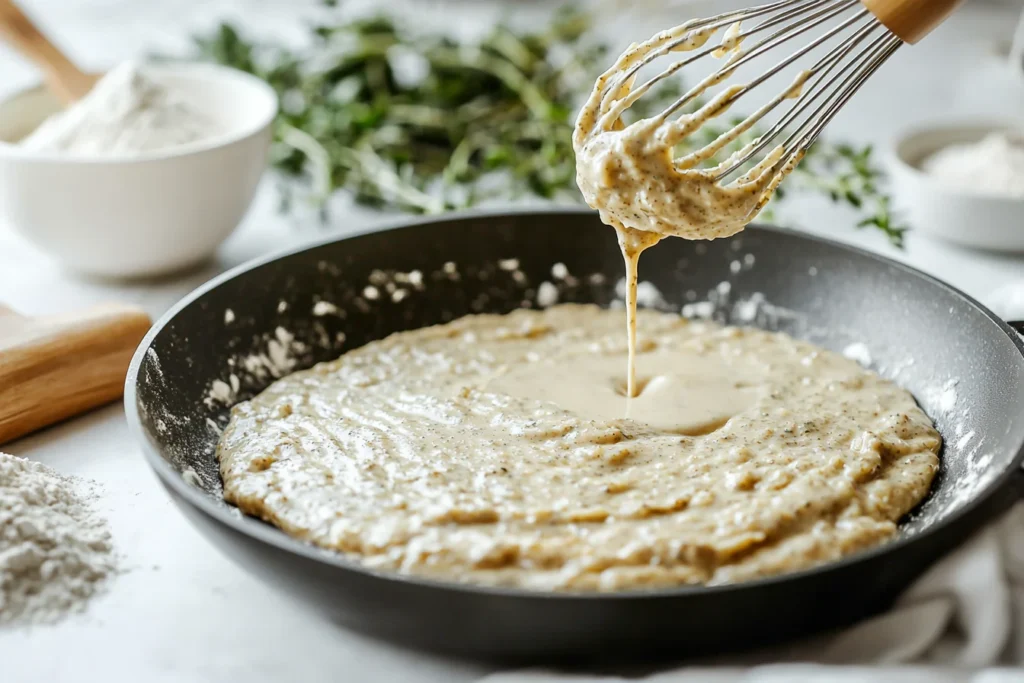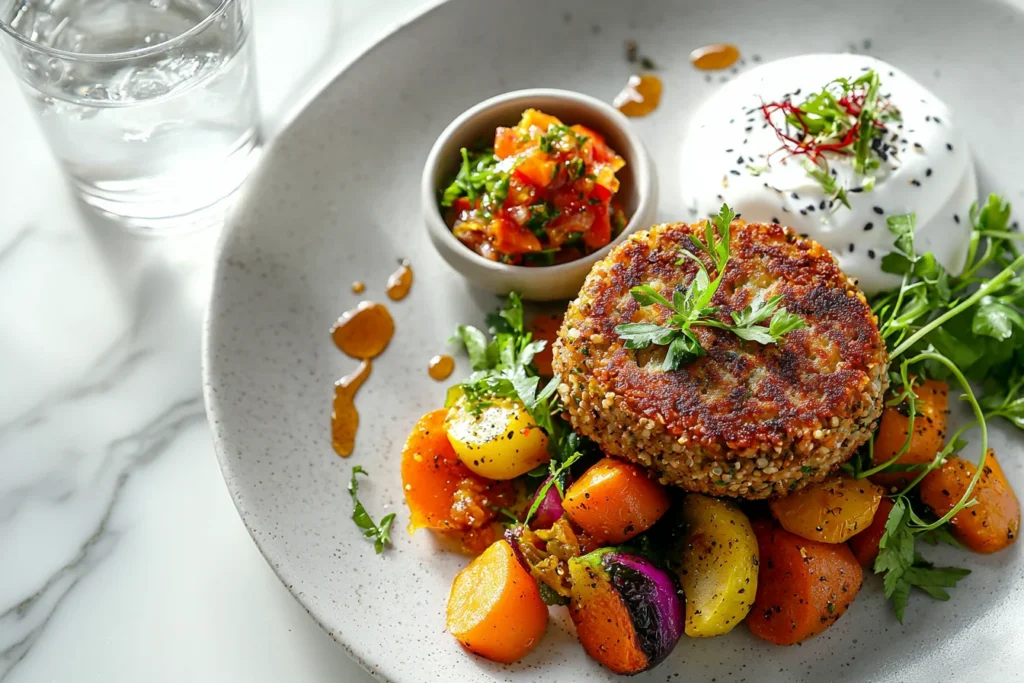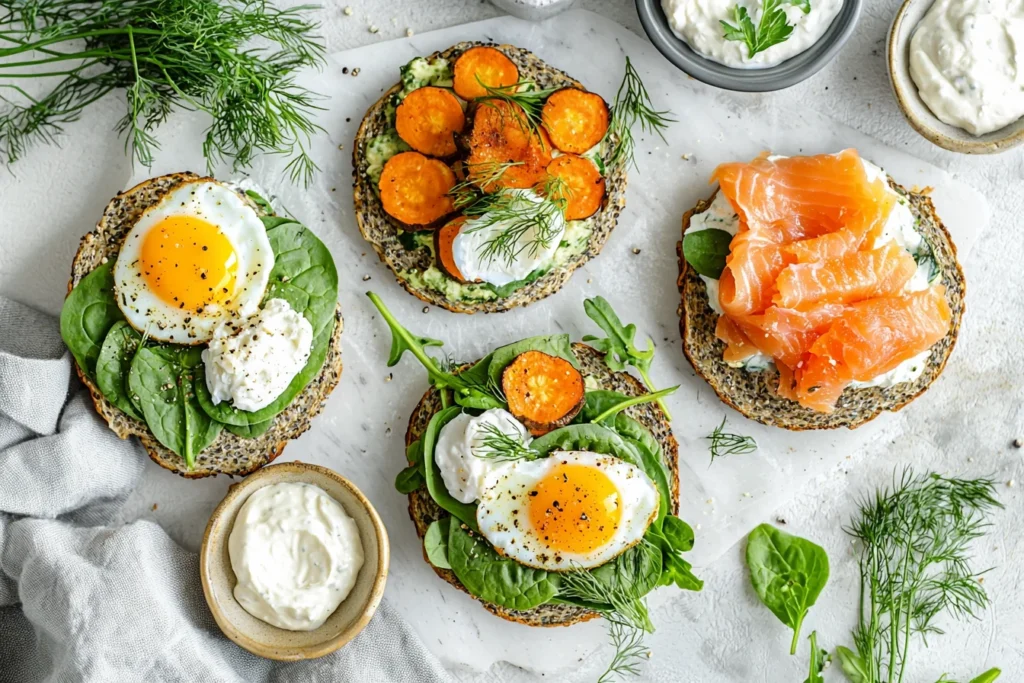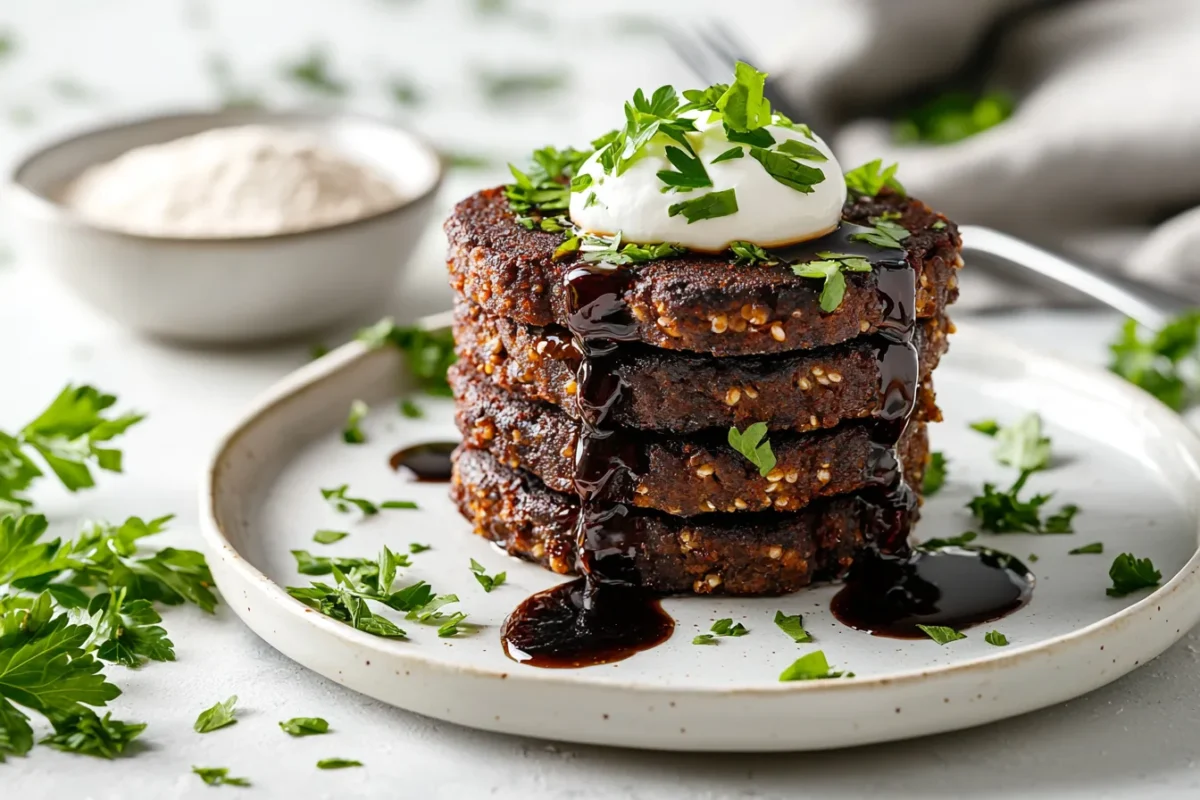Are you ready to try something new and delicious? Savory buckwheat cakes flour recipes are the perfect way to enjoy simple, wholesome meals without complicated steps. These recipes are a lifesaver when you want something quick, filling, and full of flavor.
Buckwheat flour adds a unique touch to every bite. Its earthy taste and healthy nutrients make it a favorite for those looking for something different yet easy to prepare. Plus, these cakes are incredibly versatile. You can pair them with so many toppings, making each meal feel fresh and exciting. If you’re exploring gluten-free or dairy-free meal ideas, check out Gluten-Free Dairy-Free Breakfast for more inspiration.
Why not make your next cooking adventure a fun one? These savory buckwheat cakes are ideal for breakfast, lunch, or dinner. Keep reading to learn how to create these tasty treats and discover tips to make them even better. You’re going to love how simple and delicious they are!
Table of Contents
Why Choose Buckwheat Flour for Savory Cakes?
Nutritional Benefits of Buckwheat Flour
Buckwheat flour is a nutrient-packed option, making it a fantastic choice for savory recipes. It’s naturally gluten-free, so it’s ideal for those avoiding wheat or looking for healthier alternatives. Additionally, its rich nutrient profile supports a balanced and wholesome diet. Packed with fiber and essential minerals like magnesium and potassium, it helps support digestion and overall well-being. Also, it’s a great source of plant-based protein, providing energy and keeping you feeling full longer.
Unlike refined flours, buckwheat contains high levels of antioxidants and bioactive compounds, which contribute to heart health and reduced inflammation. According to research on the Nutritional Benefits of Buckwheat Flour, this flour is rich in rutin, a powerful antioxidant that supports blood circulation and helps maintain cardiovascular health.
Wondering how buckwheat compares to other flour options? Learn more about potential drawbacks with alternatives like lupin flour in What Are the Disadvantages of Lupin Flour.
The unique composition of buckwheat flour makes it stand out. Unlike regular flour, it’s rich in antioxidants, which help fight free radicals in the body. This means that using buckwheat in your savory cakes can add a health boost to every bite. Whether you’re cooking for dietary needs or just want to eat more whole foods, buckwheat flour delivers.
Why not give this nutrient-rich ingredient a try? It’s wholesome, delicious, and so easy to incorporate into everyday meals!
Buckwheat Flour’s Unique Flavor and Texture for Cakes
Buckwheat flour has a distinct earthy flavor that also adds depth to savory dishes. Its nutty undertones pair beautifully with a variety of ingredients, from hearty vegetables to tangy cheeses. If you’re looking to create a dish with a bold, yet memorable taste, buckwheat flour is a perfect choice for experimenting in your kitchen.
The texture it provides is equally impressive and satisfying. Cakes made with buckwheat flour have a satisfying bite, offering both fluffiness and a slight chew. This balance makes them ideal for a wide range of savory recipes. Plus, the dark color of the flour gives your dishes a rustic, artisanal appearance. Whether served plain or with toppings, they’ll look as good as they taste. Ready to try something unique and exciting? Let buckwheat flour take center stage in your next savory creation. Your taste buds will thank you!
Essential Ingredients for Buckwheat Cake Recipes
Key Pantry Staples for Perfect Buckwheat Cakes
To make savory buckwheat cakes, you’ll need a few essential pantry staples. Start with buckwheat flour as your base. It’s the star of the recipe, offering flavor, texture, and nutritional benefits. You’ll also need eggs for binding and structure, but if you prefer a vegan option, flaxseed mixed with water works beautifully.
For liquid, use milk or plant-based alternatives like almond milk to keep things light and flavorful. Baking powder ensures the cakes rise nicely, while a pinch of salt enhances the overall taste. Oil, such as olive or vegetable, keeps the cakes moist and adds a touch of richness. To finish, spices like garlic powder or smoked paprika can give your cakes a bold kick. Having these ingredients on hand makes whipping up savory buckwheat cakes a breeze, any time you crave them.

Fresh Add-Ins to Enhance Savory Flavors
Fresh ingredients are key to taking your savory buckwheat cakes to the next level. Chopped herbs like parsley, dill, or chives can add bursts of flavor and color. Cheese is another fantastic option—try shredded cheddar, crumbled feta, or even a sharp Parmesan for extra richness and depth.
For a more filling dish, include sautéed vegetables such as onions, spinach, or mushrooms. These not only add flavor but also bring a delightful texture to your cakes. For a hint of crunch, toss in some toasted nuts or seeds for added variety. The possibilities are endless when it comes to customizing your recipe with fresh add-ins. Why not get creative and try a combination of your favorites, such as herbs and cheese? With a few extra touches, your buckwheat cakes will go from simple to simply irresistible and unforgettable!
Step-by-Step Recipe for Savory Buckwheat Cakes
Ingredients
Main Ingredients:
- 1 cup buckwheat flour
- 1/2 cup all-purpose flour (or gluten-free flour for a gluten-free option)
- 1 teaspoon baking powder
- 1/2 teaspoon salt
Wet Ingredients:
- 2 large eggs
- 1 cup milk (or non-dairy milk like almond or oat)
- 2 tablespoons olive oil
Flavor Additions:
- 1/4 cup chopped parsley or dill
- 1/2 cup shredded cheddar, feta, or Parmesan cheese (optional)
- 1/4 cup sautéed onions or mushrooms (optional)
Dietary Notes:
- Gluten-Free Option: Replace all-purpose flour with gluten-free flour.
- Dairy-Free Option: Use non-dairy milk and omit cheese.
Key Recipe Details
Prep Time: 10 minutes
Cook Time: 10 minutes
Total Time: 20 minutes
Servings: 6 cakes
Difficulty Level: Easy
Dietary Information: Gluten-Free and Dairy-Free options available
Cooking Instructions
1- Mix the Dry Ingredients: In a large bowl, combine buckwheat flour, all-purpose flour, baking powder, and salt. Stir to blend evenly.
Pro Tip: Sift the flour for a smoother texture.
2- Prepare the Wet Ingredients: In a separate bowl, whisk eggs, milk, and olive oil until smooth. Pour this mixture into the dry ingredients.
3- Incorporate the Flavor Additions: Gently fold in parsley, cheese, and sautéed vegetables, if using. Mix until just combined.
Pro Tip: Avoid overmixing to keep the cakes light and fluffy.
4- Preheat the Skillet: Heat a non-stick skillet or griddle over medium heat and grease lightly with oil.

5- Cook the Cakes: Scoop 1/4 cup of batter per cake onto the skillet. Cook for about 3 minutes until bubbles form on the surface, then flip and cook for another 2 minutes until golden brown.
Pro Tip: Adjust the heat if the cakes brown too quickly.
6- Serve and Enjoy: Transfer the cakes to a plate and serve immediately. Add your favorite toppings, such as sour cream, fresh herbs, or even a drizzle of balsamic glaze.
These savory buckwheat cakes are quick, versatile, and perfect for any meal. Try them today and enjoy!
Have questions or ideas to share? Drop a comment below and let us know how your buckwheat cakes turned out! We’d love to hear your feedback and suggestions.
Creative Ways to Serve Buckwheat Cakes
Pairing Savory Cakes with Sides and Toppings
Buckwheat cakes become even more delightful when paired with perfect sides and toppings. For a simple yet satisfying choice, add a dollop of sour cream or a drizzle of herbed yogurt. Additionally, fresh toppings like sliced avocado, cherry tomatoes, or pickled onions provide brightness and flavor.
For heartier meals, pair the cakes with roasted vegetables such as carrots, Brussels sprouts, or sweet potatoes. If you’re looking for a protein boost, serve them alongside grilled chicken, poached eggs, or smoked salmon. Adding a tangy relish or chutney can also bring a burst of bold flavor.
Looking for more creative serving ideas? Try these cakes at brunch with scrambled eggs or as a dinner side with a creamy soup. You can also get inspired by flavorful recipes like Lupin Falafels Recipe for ideas to customize your meal plan. These cakes adapt to every meal, making them a versatile star on your table.

What’s your favorite way to serve buckwheat cakes? Share your ideas in the comments below. Whether it’s a unique topping or an unexpected pairing, we can’t wait to see how you make these cakes your own!
Adapting Recipes for Different Meal Occasions
Savory buckwheat cakes can fit seamlessly into any meal with a few simple tweaks. For breakfast, try adding a touch of cinnamon and pairing them with poached eggs or sautéed spinach. Similarly, at lunch, transform them into a sandwich base by stacking slices of roasted vegetables and spreading on hummus or pesto.
For dinner, serve them alongside hearty stews or grilled proteins for a filling, flavorful option. Additionally, hosting a party? Miniature versions of the cakes make for creative appetizers. Top them with smoked salmon, crème fraîche, and fresh dill for an elegant touch. For even more inspiration, explore unique cheese pairings in What Cheese Goes Well with Canned Fish to complement your creations.
Whether casual or formal, these cakes suit every occasion.

Their versatility allows you to adjust toppings and pairings based on the mood or time of day. Ready to try? Add these adaptable cakes to your menu and impress your family and guests!
Tips and Tricks for Perfect Buckwheat Cakes
Storage and Reheating Ideas for Freshness
Proper storage keeps your savory buckwheat cakes fresh and delicious for days. First, allow the cakes to cool completely before storing them. Place them in an airtight container and separate each layer with parchment paper to prevent sticking. Store them in the fridge for up to three days.
For longer storage, freeze the cakes. Wrap each one individually in plastic wrap, then place them in a resealable freezer bag. They’ll stay fresh for up to three months. When reheating, use an oven or toaster oven to maintain their crisp edges. Heat them at 350°F for 5–7 minutes, or until warm.
Microwaving works for quick reheats, but it may soften the texture. To revive crispy edges, pan-fry them for a few seconds. Whether you’re meal prepping or saving leftovers, these tips ensure your buckwheat cakes always taste their best.
Flavor Boosting Tips for Your Buckwheat Recipes
Adding extra flavors to your buckwheat cakes is easy and fun. First, incorporate finely chopped fresh herbs like dill, parsley, or cilantro into the batter. These herbs add a pop of freshness and color. Next, try mixing in spices such as smoked paprika, cumin, or chili flakes for a bold, savory kick.
For extra texture, sprinkle toasted seeds or nuts like sesame, sunflower, or pine nuts into the batter. Adding finely grated cheese, such as Parmesan or sharp cheddar, gives the cakes a rich, cheesy flavor. Want a tangy twist? Add a splash of lemon juice or a pinch of lemon zest.
You can also experiment with different oils for cooking. Use infused olive oil or sesame oil to add unique flavors. With these simple tricks, you’ll create unforgettable savory buckwheat cakes. Why not try a new flavor combination today?
Variations on Classic Savory Buckwheat Cakes
Gluten-Free and Vegan-Friendly Options
Making gluten-free and vegan-friendly savory buckwheat cakes is simple and delicious. Buckwheat flour is naturally gluten-free, so it’s perfect for those avoiding wheat. For a vegan twist, swap out eggs with flaxseed or chia seed gel. To make the gel, mix one tablespoon of seeds with three tablespoons of water and let it sit until thickened.
Use plant-based milk like almond, oat, or soy instead of dairy milk. For extra moisture, add a dollop of coconut yogurt or unsweetened applesauce. You can also replace butter with olive oil or coconut oil for a healthier, plant-based alternative. Include fresh vegetables, herbs, and spices to enhance the flavor.
These adjustments keep the cakes light, flavorful, and inclusive for dietary restrictions. Try these substitutions to create savory buckwheat cakes that everyone at the table can enjoy.
Regional Twists and Flavor Combinations
Savory buckwheat cakes are versatile and can be adapted to fit regional flavors. First, for a Mediterranean spin, add sun-dried tomatoes, feta cheese, and olives. Then, sprinkle oregano or rosemary for an authentic touch. Pair with a side of hummus or tzatziki for dipping.
For an Asian-inspired variation, mix scallions, soy sauce, and sesame oil. Then, add a pinch of ginger and finish with a drizzle of sweet chili sauce for bold flavor. If you’re craving a French-style twist, try Gruyère cheese, caramelized onions, and fresh thyme in the batter. Pair this version with a crisp green salad and sparkling water for a light, elegant meal.
Experimenting with regional ingredients creates exciting and delicious dishes. Furthermore, these creative combinations make savory buckwheat cakes versatile and fun to customize for any occasion. Additionally, give one of these ideas a try and enjoy an international flair!
Frequently Asked Questions (FAQs)
Can you use buckwheat flour for cakes?
Absolutely! Buckwheat flour works wonderfully for cakes, especially savory ones. Its nutty flavor adds a unique twist that pairs well with herbs, vegetables, or cheeses. It creates a hearty texture that feels both fluffy and slightly chewy. If you’re making a sweet cake, mix it with all-purpose flour to balance its earthy taste.
First, sift the buckwheat flour before using it. This prevents clumping and ensures even mixing with other ingredients. You’ll love how versatile it is! Being gluten-free, it’s also perfect for those with dietary restrictions. Try it—you might discover your new favorite ingredient!
What flour is best to mix with buckwheat flour?
Mixing buckwheat flour with all-purpose or whole wheat flour works best for balanced results. Buckwheat’s nutty flavor shines while the additional flour improves structure and fluffiness. For a gluten-free option, try almond or rice flour as substitutes.
Start with a ratio of one part buckwheat to two parts other flour. This ensures the cakes stay light while retaining buckwheat’s distinct taste. Next, sift the flours together to avoid lumps and blend them evenly. Combining flours adds variety to texture and taste. Experiment with mixes to create your ideal savory buckwheat cakes flour recipes!
Why soak buckwheat flour?
Soaking buckwheat flour helps improve texture and digestibility in your recipes. First, it softens the flour, making it easier to mix and creating smoother batter. This step also reduces bitterness, letting the nutty flavor shine more prominently in savory dishes.
To soak, combine the flour with water or buttermilk, then let it rest for 20 to 30 minutes. Next, stir the mixture well before proceeding with the recipe. Soaking also activates natural enzymes, enhancing the nutritional benefits. Whether you’re making pancakes or savory buckwheat cakes flour recipes, soaking adds a noticeable difference to the final result!
Are buckwheat cakes good for you?
Buckwheat cakes are a healthy and delicious option for meals or snacks. They are rich in nutrients like fiber, protein, and essential minerals, making them a great choice for balanced eating. Buckwheat is naturally gluten-free, so it works well for people with gluten sensitivities.
These cakes are also easy to customize with wholesome ingredients like vegetables, herbs, or seeds. You can make them even more nutritious by adding toppings like avocado or yogurt. Their high fiber content supports digestion, while protein keeps you full longer. Savory buckwheat cakes flour recipes are a tasty and healthful addition to any menu!
Make Buckwheat Cakes Your Next Go-To Recipe
Savory buckwheat cakes flour recipes are a delicious and versatile addition to your meal plan. First, they’re easy to prepare, making them ideal for beginners or seasoned cooks alike. Additionally, their rich, nutty flavor and unique texture create a satisfying bite every time. Whether you enjoy them plain, topped, or paired with sides, they’re always a hit.
Next, these cakes can adapt to any occasion, from quick breakfasts to elegant dinners. Plus, with so many variations, you’ll never run out of ideas to make them special. Adding fresh herbs, cheeses, or vegetables takes them to another level. Also, they’re naturally gluten-free, offering a great option for different dietary needs.
Why not try making these at home today? We’d love to hear your thoughts! Share your favorite toppings, variations, or tips in the comments below. Your input could inspire others to get creative with this recipe! Don’t wait—start your buckwheat adventure now!

